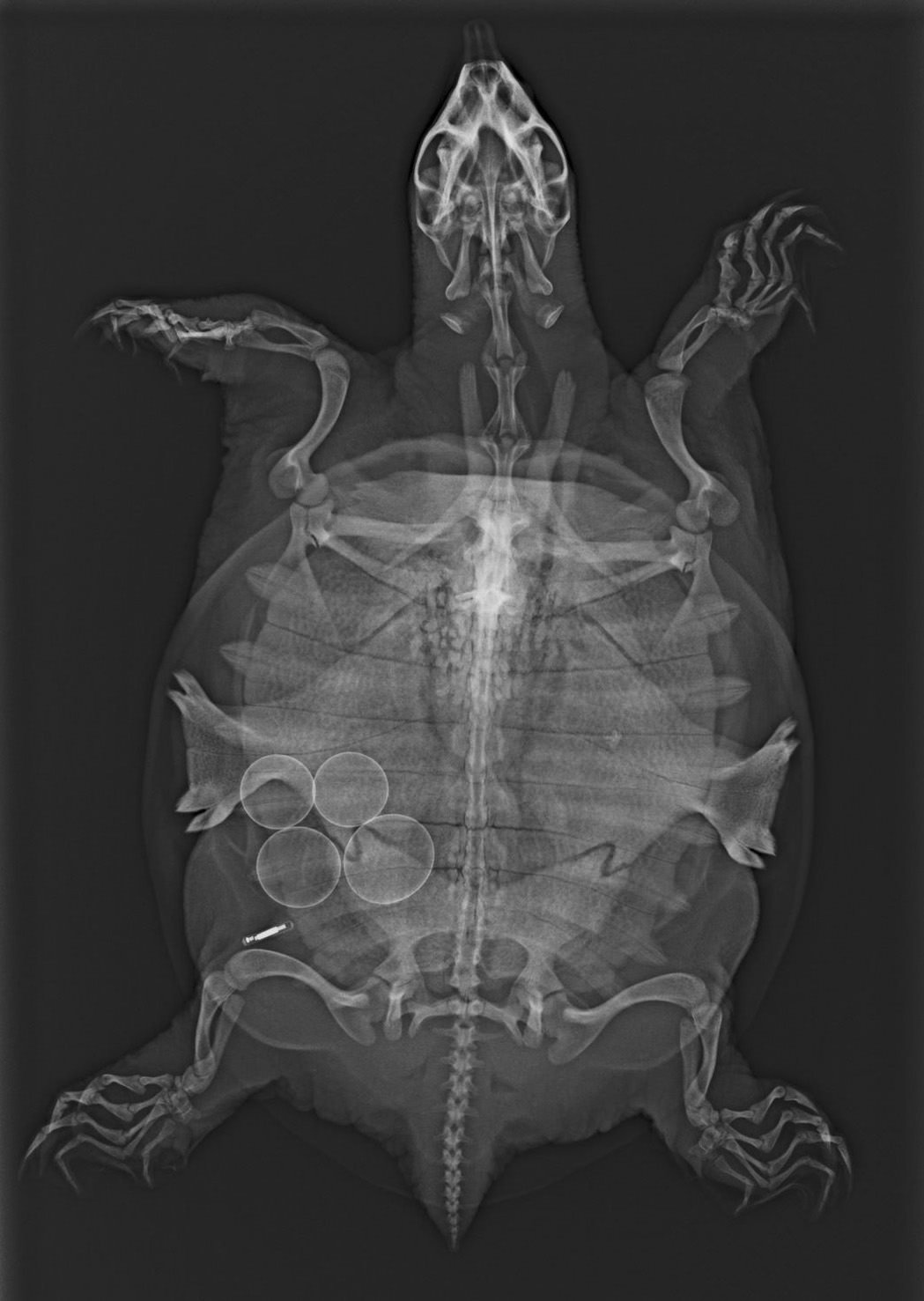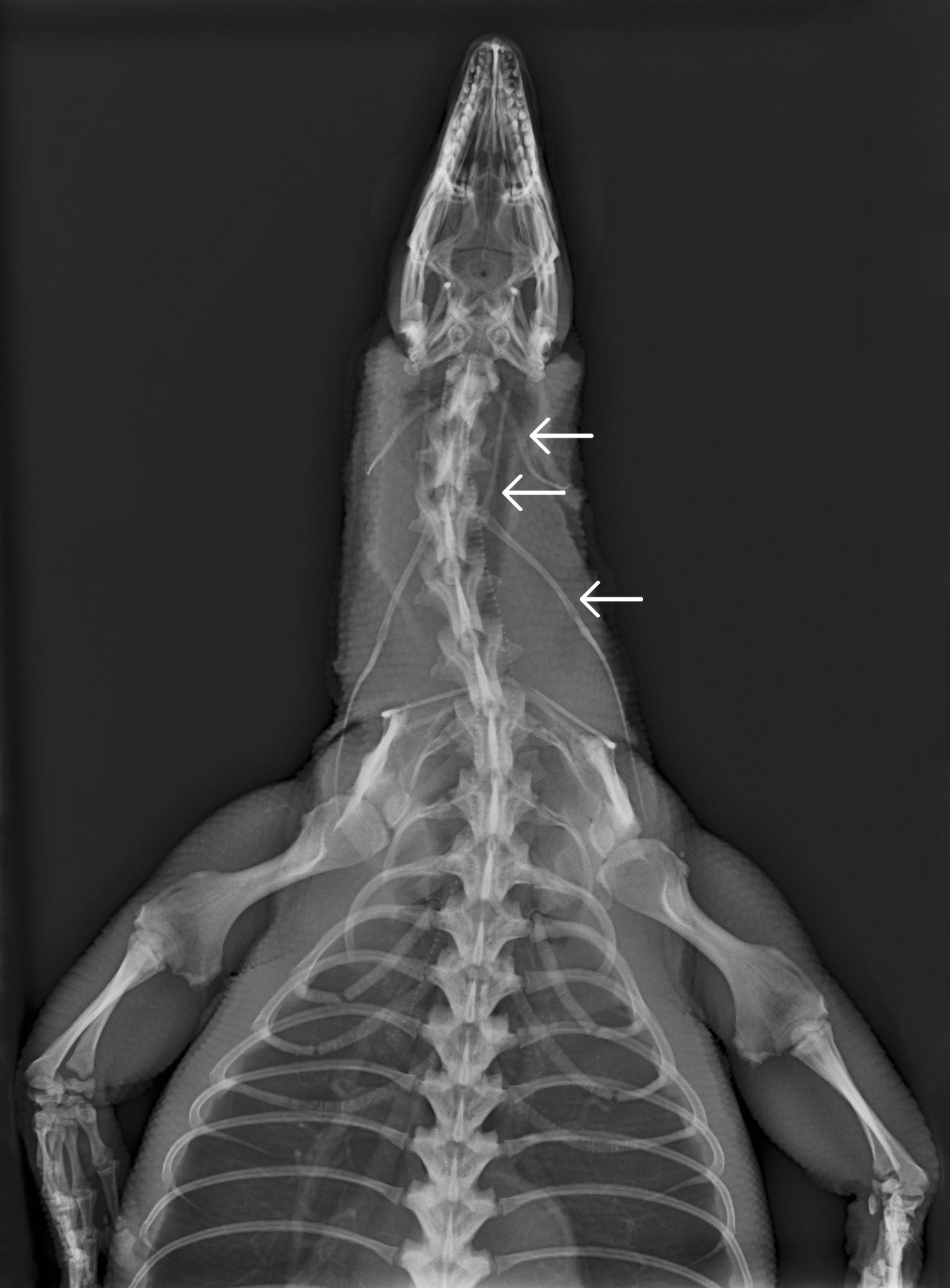Inner Beauty of Life Series: Reptiles
Some injured and sick animals treated at the KFBG Wild Animal Rescue Centre receive radiographic examinations. The resulting X-ray images not only help provide detailed evaluation of the animal’s condition, but they can also be considered as quite artistic and provide a new and unique perspective of nature.
In the past two weeks, we have shared X-ray images of rescued mammals and birds, and interesting stories about their anatomy and lifestyle.
In the last post of the series, we will feature reptiles.
1. Burmese Python

One of the world’s longest snakes, Burmese Pythons can grow up to 6m. The skeleton of a 5.35m specimen, which was reassembled in 2014 at the Florida Museum in the US, had a total of 338 vertebrae and 534 ribs. By comparison, humans have a mere 33 vertebrae and 24 ribs.
Note the small head compared to the body in the X-ray image. Pythons are able to dislocate the upper jaw from the lower jaw and thus swallow prey such as a barking deer which at first would seem too large to fit in the mouth!
2. Ball Python

This species receives its name from its behaviour when threatened. Ball pythons coil into a ball (as shown in the X-ray image), covering their head with their body. This behaviour is designed to protect the head and feign death.
3. Chinese Soft Shelled Turtle

Soft Shelled Turtles are completely at home in the river environment with their long neck and snorkel-like snout allowing them to protrude their nose out of the water to breathe. Their leathery, pancake-shaped shell creates a streamlined silhouette that makes them great swimmers.
Can you see the four perfect circles above the turtle’s left hind limb in the X-ray image? These are the round eggs characteristic of the Soft Shelled Turtle – in comparison, most other turtles bear more oval and elongated eggs. In the wild, female Soft Shelled Turtles lay their eggs in a hole dug into the river bank and then covered up with sand.
Note: The short bright white line beneath the eggs in the X-ray image is a microchip. Most animals being rehabilitated at KFBG receive some form of identity marker. This helps scientists monitor marked animals that are released and possibly recaptured. Age, movement, and growth are a few of the parameters that can be collated on recapture of a marked individual.
4. Clouded Monitor Lizard

Monitor lizards have a characteristic elongated head and neck packed with powerful muscles, plus a very well-developed hyoid apparatus (see arrows in the X-ray image). These body features allow the reptile to swallow their prey (including fish and small mammals) whole because they are unable to use their limbs to break prey into smaller pieces.
The muscles of the forelimbs are also clearly visible. Monitor lizards climb vertically up trees and dig under rocks for scorpions and spiders, so the forelimbs need to be extremely powerful.

